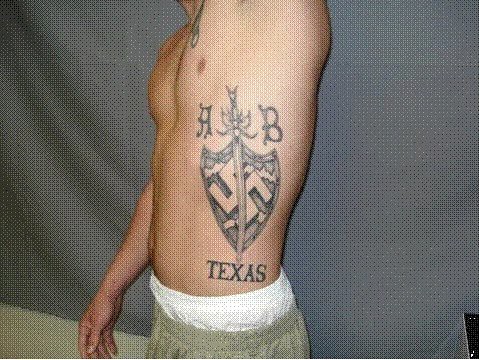-appropriate the roles & perspectives of self-selected / assigned characters of inquiry
-produce complete, multi-modal, research-based Facebook user profiles representative of the appropriated roles & perspectives of said self-selected / assigned characters
-engage the larger world of the text AND surrounding cultural, social, and so on contexts via participating in research-based, multi-modal-enriched, interactive role-play.
Before proceeding, please view the bellow link to Scout Finch’s profile created by myself to help contextualize and model the remainder of this explanation:
http://www.facebook.com/profile.php?ref=profile&id=100000518236624
NOTE: The above link navigates to an extremely stripped down, indexed version of Scout Finch's model profile. If you wish to view the complete profile either before OR after my detailed presentation to the class on Tuesday, December 15th, please befriend “Jean Louise Finch” (search for scout.finch.tkm@gmailcom; there are MANY similar profiles already active on the service) from your own Facebook user account to gain complete access.
PHASE I: CHARACTER ROLES & PERSPECTIVES APPROPRIATION
As students begin to enter the text, they will engage in detailed pre-reading and writing activities (e.g., text-based notes, bubbl.us maps, mind maps, and / or additional graphic organizers) to further investigate various characters that they find particularly interesting. Although students will have the opportunity to critically analyze final characters of choice in GREAT detail throughout phases II & III of the overall project, students will begin to “narrow down” their final choice via identifying, discussing, and overall exploring various characters’:
-Actions
-Attitudes
-Ideals
-Interests
-Personalities
-Relationships with other characters
-And so on
After students begin to get “acquainted” with and “sample” various characters, students will ideally self-select a character which they want to critically analyze to an even greater degree. If students do not come to a final choice via their pre-reading and writing, instructors can assign a particular character.
PHASE II: FACEBOOK PROFILE PRODUCTION
 As students continue to progress through the text at potentially differing paces, they will incrementally create research-based, multi-modal Facebook profiles representative of various characters' unique roles & perspectives; in other words, students will "become" the characters they appropriate, making research-based profile production decisions to accurately represent "their" individual characters. As students incrementally create individual character profiles throughout the text, they will be required to base specific Facebook page elements on research-based, textual inferences (e.g., characters’ basic biographical information including birthday, relationships to other characters and family members, relationship status, political views, and religious views, contact information, education, and work information; as well as characters’ more detailed personal information including activities, interests, favorite music, favorite TV shows, favorite books, favorite quotations, and about me information).
As students continue to progress through the text at potentially differing paces, they will incrementally create research-based, multi-modal Facebook profiles representative of various characters' unique roles & perspectives; in other words, students will "become" the characters they appropriate, making research-based profile production decisions to accurately represent "their" individual characters. As students incrementally create individual character profiles throughout the text, they will be required to base specific Facebook page elements on research-based, textual inferences (e.g., characters’ basic biographical information including birthday, relationships to other characters and family members, relationship status, political views, and religious views, contact information, education, and work information; as well as characters’ more detailed personal information including activities, interests, favorite music, favorite TV shows, favorite books, favorite quotations, and about me information).For example, in Scout Finch’s model profile, I did not publish the non-research-based profile entry that Scout’s favorite book is Twilight. Instead, I deeply mined and re-mined the text to discover / re-discover that Scout enjoys reading The Mobile Register with Atticus during the evening (p. 22). For citation purposes, students can simply publish the specific page number / range leading them to make Facebook page-specific inferences.
Central to this portion of the activity is that students are NOT limited / restricted to creating a text-only profile while analyzing and developing appropriated characters. Instead, students will be required to identify and publish relevant, research-based visual content to complete their profile. For example, in addition to appropriated characters’ main profile pictures, students will be required to create annotated digital photo albums in which they must:
-gather research-based images from outside resources such as Google Images and Flicker.com that help further “flush out” and develop characters,
-as well as annotate selected images to further connect to and illuminate characters’ larger textual and contextual worlds.
 Pictured immediately left is an image from Tom Robinson’s album titled “Walking around in my skin” which is likewise linked on Scout Finch’s profile page (NOTE: TR's profile and album were likewise created by myself to further contextualize and model the overall activity). To create this model, I visited Flicker.com, carefully gathering a collection of various creative commons images (via search terms such as "discrimination," "oppression," "slavery," and so on) to further explore what the world might be like through TR's unique roles & perspectives throughout the novel. For example, the image of a black man’s hands draped through red, white, and blue bars is paired with the following textual annotation to further “flush out” and develop what life must be like for Tom via his unique roles & perspectives in the novel: “And now here I sit in jail, falsely accused of raping Mayella Ewell when I was just trying to help her. Isn't working for a living to support your family the AMERICAN DREAM? If so, why am I behind bars? What crime did I commit?”
Pictured immediately left is an image from Tom Robinson’s album titled “Walking around in my skin” which is likewise linked on Scout Finch’s profile page (NOTE: TR's profile and album were likewise created by myself to further contextualize and model the overall activity). To create this model, I visited Flicker.com, carefully gathering a collection of various creative commons images (via search terms such as "discrimination," "oppression," "slavery," and so on) to further explore what the world might be like through TR's unique roles & perspectives throughout the novel. For example, the image of a black man’s hands draped through red, white, and blue bars is paired with the following textual annotation to further “flush out” and develop what life must be like for Tom via his unique roles & perspectives in the novel: “And now here I sit in jail, falsely accused of raping Mayella Ewell when I was just trying to help her. Isn't working for a living to support your family the AMERICAN DREAM? If so, why am I behind bars? What crime did I commit?”And again, students are NOT limited / restricted to publishing static images; they can also publish video artifacts by uploading and / or linking to Google Video and YouTube content – more on this in a moment.
Overall, I caution instructors that this phase of the overall project sounds MUCH simpler and quicker than it actually was / is. While creating Scout’s model profile, I wouldn’t doubt that I spent upwards of 10 or more hours mining and re-mining the text to gather and publish relevant, research-based Facebook page elements accurately representative of Scout's unique roles & perspectives throughout the novel. With that said, I argue that this overall project is MOST effective if thought of as an ongoing, highly RECURSIVE, “DURING” reading activity that should not be rushed. Instead, students will incrementally develop appropriated characters’ profiles as they mine, re-mine, revise, re-revise, and GRADUALLY come to understand how various characters function in relation to each other and the larger textual world.
PHASE III: MULTI-MODAL-ENRICHED ROLE-PLAY
As profiles begin to “even out” and become more “static” (I’m assuming that profiles will begin to take on this more static form as students continue to progress through the novel), students will then be encouraged to shift focus from developing individual characters, to interacting with characters appropriated by other students (if they have not already started doing so!). And this is where Facebook as a medium absolutely shines as the application was literally designed for this type of multi-modal social networking!

Although instructors could select specific issues of text-based inquiry for students to explore via appropriated characters' roles & perspectives, self-initiated, inquiry-based conversation is the ideal goal. For example, in Scout's model profile, I publish a text-based inquiry in the form of a Facebook “note” in which I further process Dill and Jem’s harassment of Boo Radley via the appropriated roles & perspectives of Scout herself.
As this Facebook "note" is then immediately visible to other appropriated characters who are Facebook friends with Scout, other students are then encouraged to contribute to my / Scout’s thinking via the appropriated roles & perspectives of THEIR respective characters. For example, in response to Scout’s original "note," another student appropriating Tom Robinson's character jumps in to further illuminate and process via research-based conclusions the experience Scout initially describes. Furthermore, students can "tag" other students / appropriated characters in each note to actively encourage participation and invite peer feedback. For example, notice how Dill Harris is tagged in this particular note, potentially encouraging and inviting the student appropriating Dill's character to respond and further contribute to my / Scout's thinking via Dill's unique roles & perspectives in the novel.

And again, students are NOT restricted to text-only interaction. For example, students can directly upload visual images / video as described earlier, as well as link to external images / video to further develop their thinking. Take a look at the exchange between Scout Finch and Tom Robinson regarding a link I / Scout posted to a YouTube video focusing on the Scottsboro Boys.
ADDITIONAL DURING / POST READING & WRITING ACTIVITIES
 To help students more deeply appreciate and understand the larger cultural, social, and so on contexts in which To Kill a Mockingbird is situated (after all, the book takes place across the 1920s and 30s!), students can critically analyze unclear resonances via producing multi-modal wiki entries further elaborating specific Facebook profile fields. For example, I / Scout Finch mentions that she and her brother Jem enjoy reading and reenacting the adventures of Tom Swift. As I'm imagining an entire class will have no idea who Tom Swift is, why he is important, and / or how he might relate to the larger world of the text (I sure didn't!), students could create a short wiki entry for Tom Swift to further contextualize and create meaning for this piece of otherwise de-contextualized, period-specific information. And it would work quite easily, really; instructors just need to set up a class wiki and sit back while students create entries, further linking to and sharing said entries via their Facebook pages. For example, please view the sample wiki entry for Tom Swift that I / Scout Finch linked to on my / her respective Facebook profile page:
To help students more deeply appreciate and understand the larger cultural, social, and so on contexts in which To Kill a Mockingbird is situated (after all, the book takes place across the 1920s and 30s!), students can critically analyze unclear resonances via producing multi-modal wiki entries further elaborating specific Facebook profile fields. For example, I / Scout Finch mentions that she and her brother Jem enjoy reading and reenacting the adventures of Tom Swift. As I'm imagining an entire class will have no idea who Tom Swift is, why he is important, and / or how he might relate to the larger world of the text (I sure didn't!), students could create a short wiki entry for Tom Swift to further contextualize and create meaning for this piece of otherwise de-contextualized, period-specific information. And it would work quite easily, really; instructors just need to set up a class wiki and sit back while students create entries, further linking to and sharing said entries via their Facebook pages. For example, please view the sample wiki entry for Tom Swift that I / Scout Finch linked to on my / her respective Facebook profile page:http://ci5475digitalwriting.pbworks.com/TKM-Class-Wiki
POTENTIAL CHALLENGES
To address what I can imagine is the reader's IMMEDIATE critique of my proposed project, I completely acknowledge that social networking applications such as Facebook are FREQUENTLY blocked in academic settings. However, I do not necessarily think that this attempt at institutional censorship negates the benefits of my proposed project; in fact, I argue that such censorship might have the reverse effect, further increasing students' and teachers' engagement, interest, and motivation with the overall task.
 First of all, the incremental creation and revision steps inherent to this project CAN be accomplished while using school networks where the Facebook application is typically blocked; just in the alternate form of a wiki. Let me describe the process that I envision in greater detail:
First of all, the incremental creation and revision steps inherent to this project CAN be accomplished while using school networks where the Facebook application is typically blocked; just in the alternate form of a wiki. Let me describe the process that I envision in greater detail:1.) Set up a class wiki on PB Wiki, creating specific pages for each student (e.g., John's page, Kate's Page, Rick's page, and so on). NOTE: This stage of the process is where INSTRUCTORS will be required to do the most amount of leg work.
2.) Blocking out computer time during class, STUDENTS will then access their INDIVIDUAL wiki pages, further creating "dummy" Facebook pages that can be used as digital "lockers" to publish and store relevant, multi-modal, Facebook profile-specific information... AFTER being taught specifically how to do so, of course.
3.) From a later time and place at home and / or when students have access to a reliable network where the Facebook application is not blocked, profile-specific, multi-modal information can simply be transferred from the wiki storage locker to appropriated characters' respective Facebook profiles!
Please view the bellow link to a model wiki digital storage locker and accompanying illustrations to further explore this trick.
http://ci5475digitalwriting.pbworks.com/FB-PAGE-ELEMENTS
And lastly, I argue that the "subversive" nature inherent to this project may create the interesting effect of driving further engagement, interest, and motivation for students and teachers to critically explore the text in question. In other words, students and teachers may approach this overall task deviously knowing that they aren't "supposed" to be dong such an activity as Facebook is "fun" and therefore shouldn't be present in school. Students and teachers then may be motivated to collaboratively empower themselves to "fool" the system, have fun / experience a sense of satisfaction doing said "fooling," and maybe learn something during the process!
I hope you found this project concept interesting and useful to your future teaching practice. Please feel free to provide additional questions, comments, and concerns to this blog entry! Thank you for reading, and best of luck 5475!






















